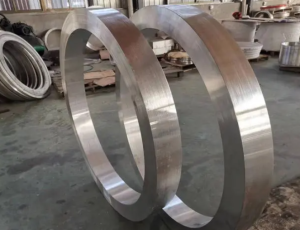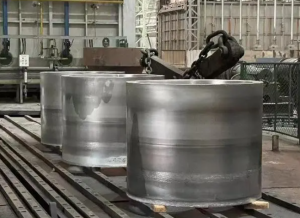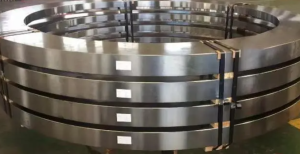1. How to calculate the weight of copper forgings?
With the sustainable development of industrial manufacturing technology, copper forgings are increasingly used in various fields, such as aviation, aerospace, automobiles, electronics and other industries. The processing quality of copper forgings directly affects the performance and life of the product, while the weight calculation during processing is related to production costs and material utilization. So, how do you accurately calculate the weight of copper forgings?
Characteristics of Copper Forging Processing
Copper forging processing is forging copper rods, plates, and other copper materials into parts of the required shape and size. Copper forgings have the following characteristics:
- Good electrical conductivity: Copper has good electrical conductivity and is widely used in the electronic and electrical fields.
- Excellent thermal conductivity: Copper has high thermal conductivity and is often used in radiators, heat exchangers, etc.
- Corrosion resistance: Copper is not easily oxidized in the air and can be used to make pipes, valves, etc.
- Good mechanical properties: Copper has high strength and hardness and can withstand large pressure and torque.
Weight calculation method in copper forging processing
The weight calculation in copper forging processing mainly includes the following aspects:
- Weight of raw materials: Calculate the weight of raw materials based on the type, specification and length of the copper material.
- Processing loss: During the processing of copper forgings, material loss will occur due to operations such as shearing, bending, and stretching. Normally, the processing loss rate is 5%-10%.
- Finished product weight: Calculate the weight of the finished product based on the size, shape and density of the forging. The following formula can calculate it:
Finished product weight = Raw material weight × (1 – Processing loss rate) × Finished product density
- Weight tolerance: Calculate the allowable weight tolerance based on the size and shape of the forging and the customer’s requirements.

Weight calculation skills in copper forging processing
- Be familiar with the specifications and density of raw materials: When calculating weight, you need to be familiar with the specifications and density of copper materials in order to correctly calculate the amount of raw materials and finished materials.
- Understand the processing loss rate: The processing loss rate will vary depending on the processing method and equipment. Therefore, it is necessary to understand the loss rate of various processing methods in order to calculate the weight more accurately.
- Understand the density of finished products: The density of finished copper forgings will vary depending on the type of material, processing method and other factors. Understanding these differences will help calculate the finished product’s weight more accurately.
- Consider weight tolerance: When calculating weight, customer requirements for weight tolerance should be considered to ensure that the product meets the requirements.

2. What are the requirements for copper forging processing?
Material selection
The first step in copper forging processing is to select the appropriate copper alloy material. Common copper alloys include brass, bronze, white copper, etc. Various alloys have different mechanical properties, corrosion resistance and processing properties. Therefore, when processing copper forgings, we need to select appropriate copper alloy materials based on actual needs.
Process flow
The process flow of copper forging processing includes smelting, forging, heat treatment, cooling, machining and other links. Among them, smelting is to obtain a copper alloy that meets the requirements, forging is to obtain the required shape and size of the forging, heat treatment is to improve the mechanical properties of the copper forging, and cooling and machining are to meet the actual application needs of the copper forging.

Quality control
During the processing of copper forgings, quality control is crucial. We need to carry out strict quality control on every process link to ensure that every forging meets the requirements of the actual application. This includes quality inspection of raw materials, strict control of process parameters, precise inspection of the size and shape of forgings, etc.
Environmental requirements
With the continuous improvement of environmental awareness, environmental protection requirements while processing copper forgings are also getting higher and higher. We need to adopt environmentally friendly production processes to reduce the emission of waste gas, waste water and waste residue and reduce the environmental impact. At the same time, we also need to reasonably handle the waste in the production process and realize the reuse of resources.
In short, when processing copper forgings, we need to pay attention to material selection, process flow, quality control, environmental protection requirements and technological innovation to achieve high-quality, high-efficiency production. At the same time, we also need to continuously adjust and optimize production strategies based on market demand and industry development trends to meet the ever-changing market demand.

Supplier
TRUNNANO is a supplier of raw materials of copper forging with over 12 years experience in nano-building energy conservation and nanotechnology development. It accepts payment via Credit Card, T/T, West Union and Paypal. Trunnano will ship the goods to customers overseas through FedEx, DHL, by air, or by sea. If you are looking for high-quality raw materials of copper forging please feel free to contact us and send an inquiry.
